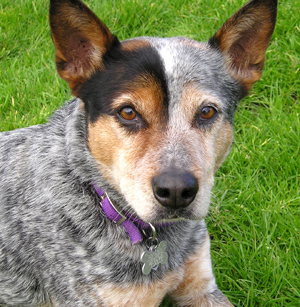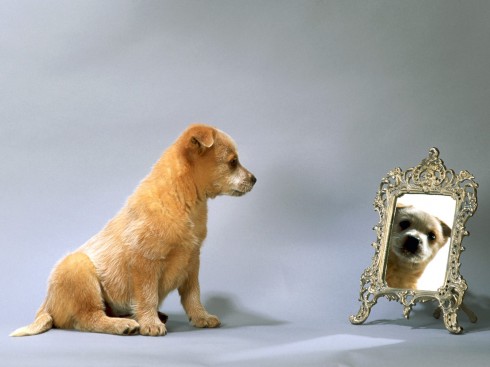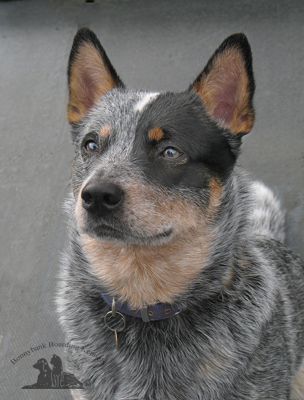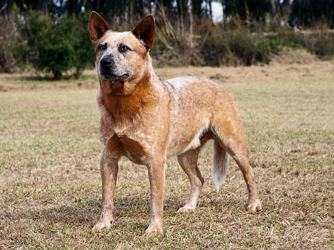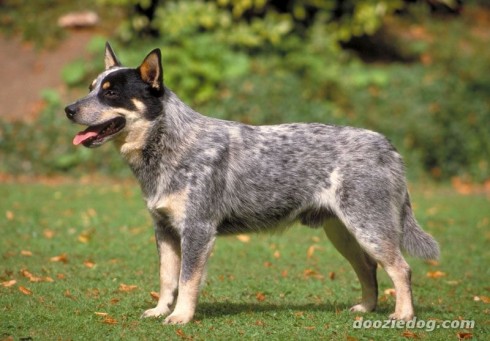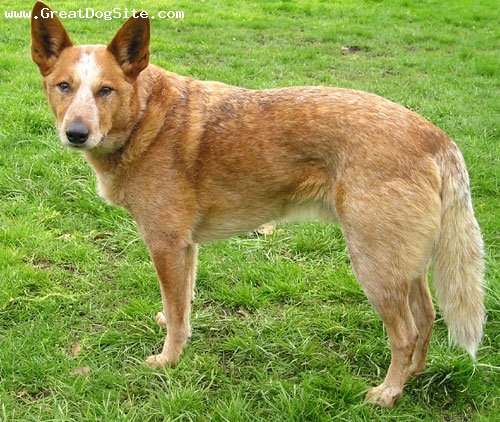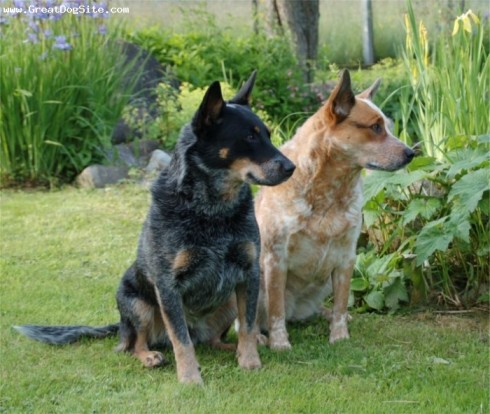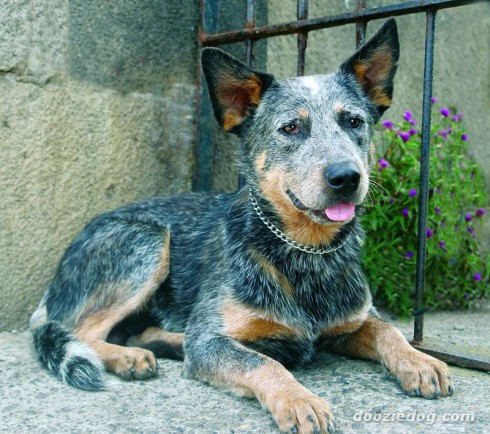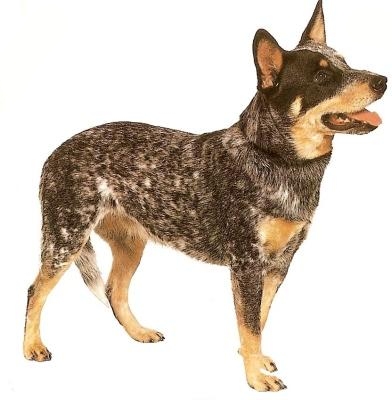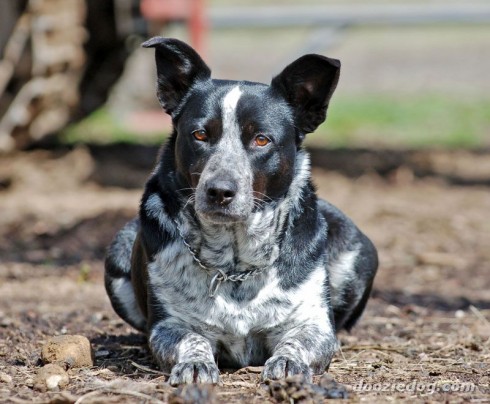Main Index
In Store
Our Web Store
Miniature Schnauzer Picture Gallery
Latest Dog Blogs
- What Are The Basic Commands To Train A Dog?
- PaySafe As The Most Popular Type Of Deposit
- Everything You Need To Know About Pet Sales
- Dogs Contribute To Our Physical And Mental Well Being
- How To Choose Where To Bet On Greyhounds In 2022
- Volunteer With Animals - How To Help Dogs Around The World
- Basic Understanding Of The House Edge
- Why You Should Get A Dog
- Top 20 Popular Dog Names Around The World
- Constipation in Dogs and How to Find Solutions
Australian Cattle Dog
Australian Cattle Dog Picture Gallery
Australian Cattle Dog Breeders
Australian Cattle Dog Clubs/Associations
The Full Australian Cattle Dog Description
Australian Cattle Dogs are hard workers today on farms throughout the world. They need to run, to chase, to herd, and to play with their owners. They are sometimes suspicious of people and dogs they don't know. They are obedient, but training takes patience because they're also independent.
Did you know?
In the show ring, they are called the "wash and wear" dog as the only grooming required is a bath and a good brushing to keep the coat clean and healthy.
The Australian Cattle Dog is sometimes known as the Blue Heeler, Queensland Heeler, Queensland Blue Heeler, and was originally known as the Australian Heeler.
So you want to own an Australian Cattle Dog?
Australian Cattle Dogs are sturdy, alert, and watchful. The Australian Cattle Dog was originally bred to work cattle in the rough inland terrain of Australia.
The coat is easy to care for, a good bathing and brushing will keep the coat clean and healthy.
Bred to herd all day, Australian Cattle Dogs have a lot of energy.
Australian Cattle Dog's love their owners and especially love to play with children.
Indicative Breed Standard
General Appearance
Strong, compact, symmetrical, with substance, power and balance. Hard muscular condition conveys agility, strength and endurance. Grossness or weediness undesirable.
Characteristics
Ability to control and move cattle in all environments. Loyal, protective. Guardian of stockman, herd and property. Naturally suspicious of strangers, but amenable to handling. Biddable.
Temperament
Alert, intelligent, watchful, courageous, trustworthy, devoted to its work.
Head and Skull
Strong, in balance with body and general conformation. Skull broad and slightly curved between ears, flattening to slight but definite stop. Cheeks muscular but not coarse or prominent. Strong under-jaw, deep and well developed. Broad foreface, well filled in under eyes, tapers gradually down medium length muzzle which is parallel to skull. Nose always black.
Eyes
Medium, oval, alert and intelligent, dark brown. Neither prominent nor sunken. Warning suspicious glint is characteristic.
Ears
Moderate, small rather than large. Broad at base, muscular, pricked and moderately pointed. Oval or bat-eared undesirable. Set wide apart inclining outwards. Sensitive, pricked when alert. Leather thick in texture and inside ear well furnished with hair.
Mouth
Lips tight and clean. Jaws strong with a perfect, regular and complete scissor bite, i.e. upper teeth closely overlapping lower teeth and set square to the jaws.
Neck
Exceptionally strong, muscular, of medium length blending into body. Free from throatiness.
Forequarters
Strong, sloping shoulders well laid back, not too closely set at withers. Strong, round bone, legs straight when viewed from front, pasterns flexible and slightly sloping when viewed from side. Loaded shoulder and heavy front undesirable.
Body
Slightly longer from point of shoulder to buttocks than height at withers, as 10 is to 9. Level topline, strong back and couplings. Well sprung ribs, carried well back, but not barrel ribbed. Chest deep, muscular and moderately broad.
Hindquarters
Broad, strong and muscular. Croup rather long and sloping. Well turned stifle, hocks strong and well let down. When viewed from behind, hocks to feet straight and set parallel, neither too close nor too wide apart.
Feet
Round, short toes, strong, well arched and held tight, pads hard and deep. Nails short and strong.
Tail
Set on low, following slope of croup/rump. Reaching to hock, hanging in slight curve at rear. When working or excited, may be raised but never carried over back. Good brush.
Gait/Movement
True, free, supple, tireless, with powerful thrust of hindquarters. Capable of quick and sudden action. Soundness of paramount importance. Stands four square, but when moving at speed, legs tend to converge. Any weaknesses highly undesirable.
Coat
Smooth, double with short dense undercoat. Close top coat, hard, straight and weather resistant. Under body and behind legs, coat is longer to form mild breeching near thighs. Short on head (including inside of ear) front of legs and feet. Thicker and longer on neck. Average hair length 2.5-4 cms (1-11/2 ins).
Colour
Blue: Blue, blue-mottled or blue speckled with or without other markings. Permissible markings are black, blue or tan markings on head, evenly distributed for preference. Forelegs tan midway up legs and extending up the front to breast and throat, with tan on jaws. Hindquarters tan on inside of hindlegs, and inside of thighs, showing down front of stifles and broadening out to outside of hindlegs from hock to toes. Tan undercoat permissible on body providing it does not show through blue outer coat. Black markings on body undesirable.
Red Speckle: Good even red speckle all over, including undercoat, (neither white nor cream), with or without darker red markings on head. Even head markings desirable. Red markings on body permissible but undesirable.
Size
Height at withers: dogs: 46-51 cms (approx. 18-20 ins); bitches: 43-48 cms (approx. 17-19 ins).
About Our Article Directory
- Article
- 27 November 2010
- 2 comments
Canis lupus familiaris
- Breed Article
- 29 May 2010
- No comments
Quick Search
Donate
Latest Dog Pods
- Tips on How to Stop Your Dog from Biting
- Beware - Not All Advertised Dog Rescues Really Are! How Can You Know The Truth?
- Helpful Tips For Dog Obedience Problems
- How to Keep Dogs From Eating Poop
- Dog Grooming Tips - A General Overview of the Very Basics of Dog Grooming
- Recognising Different Types of Dog Obedience Problems
- 5 Important Tips On Feeding A Puppy


